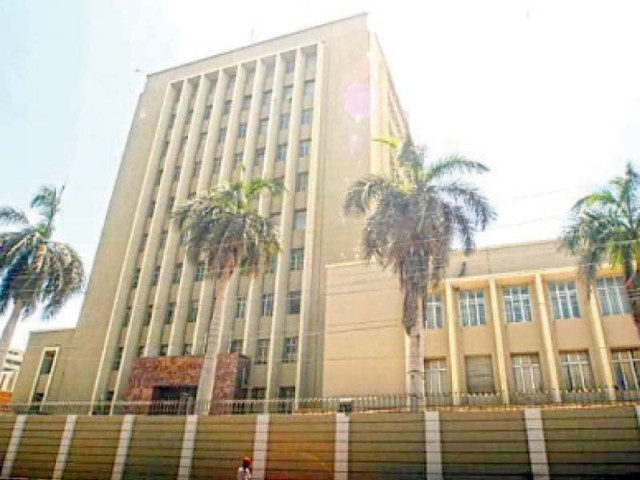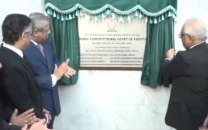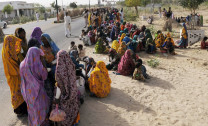SBP jacks up key rate as rupee nosedives
Key policy rate up by 300bps to 20% as Pakistan clambers to meet IMF conditions

The State Bank of Pakistan (SBP) on Thursday aggressively jacked up the key policy rate by 300 basis points on a day that saw a ruthless hammering of the rupee against the dollar, stoking fears that the economy might register negative growth this fiscal year.
The central bank’s decision at a preponed meeting that exceeded the market expectation of a hike of 200 basis points in the rate came as the government clambered to fulfilling the International Monetary Fund (IMF) conditions for the revival of its loan programme.
The rate hike also comes a day after the data released by the Pakistan Bureau of Statistics (PBS) showed inflation skyrocketing to a five-decade high of 31.5%, raising fears that the country was fast heading towards hyperinflation.
The new policy rate at 20% is the highest in more than 26 years. “The Monetary Policy Committee (MPC) decided to raise the policy rate by 300 basis points to 20 per cent in its meeting today,” the SBP said in a statement.
“This decision reflects deterioration in inflation outlook and its expectations amid recent external and fiscal adjustments. The MPC believes this outlook warrants a strong policy response to anchor inflation expectations around the medium-term target of five to seven per cent.”
1677816560-0/image-(19)1677816560-0.png)
The central bank has revised its projection for inflation reading to 27-29% for the current fiscal year ending June 30, 2023, against its November 2022 anticipation of 21–23% for the year.
The surge in inflation reading is re-estimated after the government revised upwards the energy tariffs, imposed new taxes through the mini-budget and let the domestic currency devalue sharply in the recent days and weeks to unlock the $6.5 billion IMF programme.
On Thursday, the rupee devalued by close to 7% in a day to an all-time low of around Rs285 against the US dollar in the interbank market. The per tola price of 24-karat gold also increased by a significant amount of Rs9,400 to Rs206,500.
The demand-cutting measures – in addition to the devastating floods last year and high political instability in the country – have been multiplying the inflation reading and compromising the economic growth as well.
The local research houses have anticipated the growth in the range of 1.25% to slightly negative for the year. In the latest statement, the SBP gave no projection but it had projected in January the growth rate of less than 2% for FY23 compared to 2% in November 2022.
The SBP brought forward the MPC meeting from an original date of March 16. The interest rate is a tool available with the central banks around the world to control inflation, as price stability is a must to achieve sustainable economic growth.
Earlier, the IMF had asked the government to hike the rate for the revival of the $6.5 billion loan programme, which is a must to boost foreign exchange reserves and avert the imminent default on foreign debt repayments.
In its last meeting in January, the MPC had highlighted near-term risks to the inflation outlook from external and fiscal adjustments. “Most of these risks have materialised and are partially reflected in the inflation outturns for February,” the SBP said.
According to the SBP’s latest monetary policy statement (MPS), the national Consumer Price Index (CPI) inflation surged to 31.5%, while core inflation rose to 17.1% in urban and 21.5% in rural basket in February 2023 compared to the same month last year.
“The recent fiscal adjustments [increase in tariffs and mini-budget] and the rupee-dollar exchange rate depreciation have led to a significant deterioration in the near-term inflation outlook and a further upward drift in inflation expectations…” it added.
The committee expected inflation to rise further in the next few months as the impact of such fiscal and monetary policy [policy rate] adjustments unfolded before it began to fall, albeit at a gradual pace.
On the external side, the MPC noted that despite a substantial reduction in the current account deficit (CAD), vulnerabilities continued to persist.
In January 2023, the CAD fell to $242 million, the lowest level since March 2021. Cumulatively, the CAD – at $3.8 billion in Jul-Jan FY23 – is down 67% compared to the same period last year.
“Notwithstanding this improvement, scheduled debt repayments and a decline in financial inflows amid rising global interest rates and domestic uncertainties, continue to exert pressure on FX [foreign exchange] reserves and the [rupee-dollar] exchange rate.”
The MPC noted that foreign exchange reserves remained low – at present at $3.8 billion – and concerted efforts were needed to improve the external position, the SPB’s policy statement said.
“In this regard, conclusion of the ongoing 9th review under the IMF’s EFF [Extended Fund Facility or the loan programme] will help address near-term external sector challenges,” the MPS added.
Furthermore, the SBP stressed the urgent need for energy conservation measures to alleviate pressure on the external account and meet the import requirements of other sectors. The share of energy imports is about one-fourth of the total import bill.
Recent fiscal measures – including an increase in general sales tax (GST) and excise duties, reduction in subsidies, adjustments in energy prices, and the austerity drive – are expected to help contain the otherwise widening fiscal and primary deficits, the SBP said.
“As highlighted in earlier statements, the envisaged fiscal consolidation is critical for the economic stability and will complement the ongoing monetary tightening in bringing down inflation over the medium-term,” it continued.
“The committee (MPC) emphasised that any significant fiscal slippages will undermine monetary policy effectiveness in the context of achieving the price stability objective,” the central bank warned.
The risks to financial stability remain contained, given that financial institutions were broadly well capitalised, the SBP said. “On the growth [front], however, there exists a trade-off.”
The MPC, nonetheless, reiterated its earlier view that the short-term costs of bringing down inflation were lower than the long-term costs of allowing it to become entrenched.
Barring unexpected future shocks, the central bank noted that the latest decision of 300 basis points hike in policy rate “has pushed the real interest rate in positive territory on a forward-looking basis”, adding that this would help anchor inflation expectations and steer inflation to the medium-term target of 5–7% by the end of fiscal year 2025.
The next MPC meeting has also been preponed to April 4 from April 27, 2023.



















COMMENTS
Comments are moderated and generally will be posted if they are on-topic and not abusive.
For more information, please see our Comments FAQ